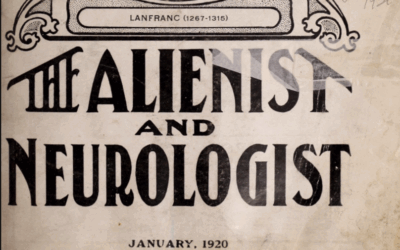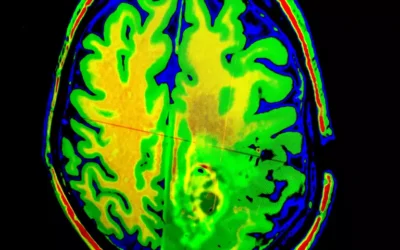Who Was Mani?
“The Soul that wandereth from body to body strayeth from light to darkness until she hath traveled the Seven Worlds.” – Mani

What is Manicheism:
Manichaeism was a major gnostic religion that arose in Persia in the 3rd century CE, founded by the prophet Mani. It synthesized elements from various religious traditions, particularly Zoroastrianism, Christianity, and Buddhism. The roots of Manichaeism can be traced to these different philosophical and religious currents that influenced its central teachings and cosmology.
Manichaeism also incorporated elements from other religious and philosophical traditions prevalent in the region during Mani’s time.
Influence’s on Mani:
1. Christianity:
Mani claimed to be the “Paraclete” (Comforter) prophesied in the New Testament, and his teachings drew upon Christian concepts such as the role of a savior figure, the importance of evangelism, and the practice of fasting and abstinence.
2. Buddhism:
Manichaeism shared with Buddhism the emphasis on asceticism, non-violence, and the belief in the cycle of reincarnation (though Mani rejected the concept of karma).
3. Babylonian and Ancient Iranian Mythology:
Mani’s cosmogony and mythology incorporated various mythological elements from ancient Mesopotamian and Iranian traditions, including stories of primordial beings and cosmic battles.
4. Zoroastrianism:
Manichaeism drew heavily from the dualistic principles of Zoroastrianism, one of the oldest monotheistic religions originating in ancient Persia (modern-day Iran). Zoroastrianism is based on the cosmic struggle between the forces of good, represented by the wise lord Ahura Mazda, and the forces of evil, represented by the destructive spirit Angra Mainyu.
This fundamental dualism between light and darkness, good and evil, is a central tenet of Manichaeism as well. Mani adopted the Zoroastrian concept of two opposing realms – the Kingdom of Light and the Kingdom of Darkness – locked in an eternal battle.
Additionally, Manichaeism incorporated Zoroastrian beliefs in the importance of good thoughts, good words, and good deeds, as well as the veneration of fire and light as sacred symbols.
By synthesizing these diverse influences, Mani created a highly systematic and comprehensive religious system. Manichaeism presented a unique cosmological narrative that sought to explain the origin of evil, the purpose of human existence, and the path to spiritual salvation. Despite facing persecution and ultimately declining, Manichaeism had a profound impact on the religious and philosophical landscape of the ancient world, and its dualistic principles and gnostic elements continue to resonate in various mystical and esoteric traditions.
Founder of Manichaeism:
Mani (216-276 CE) was a Persian prophet, philosopher, and religious reformer who founded the gnostic religion of Manichaeism. His visionary teachings blended elements of Zoroastrianism, Buddhism, and Christianity into a comprehensive cosmology and philosophy of salvation. Though ultimately suppressed, Manichaeism spread widely through the ancient world and greatly influenced other religious movements and philosophies. Mani’s ideas on the cosmic struggle between light and darkness, the nature of the soul, and the path to spiritual liberation bear striking parallels to some modern psychological theories and practices.
 Mani’s Life and Revelation:
Mani’s Life and Revelation:
Mani was born in Babylonia (modern-day Iraq) into a Jewish-Christian baptism sect. From a young age, he experienced mystical visions and perceived that he was the long-awaited prophet and “Apostle of Light” foretold in the scriptures of various faiths.
In 238-239 CE, Mani received a revelation that inspired him to begin preaching a new universal religion based on dualistic cosmology – a cosmic battle between the forces of light (good) and darkness (evil). He composed seven writings to spread his message, undertaking extensive travels across Persia and surrounding regions.
The Manichaean Cosmology:
At the center of Manichaean thought is the concept of dualism – the coexistence of two primal, opposed cosmic forces of light and darkness. The transcendent light represents the spiritual realm of goodness, knowledge, and freedom. The kingdom of darkness symbolizes matter, ignorance, and bondage.
However, Mani did not envision an absolute dualism. Rather, he taught that particles of light became entrapped within darkness during the primordial conflict. These sparks of light comprise the divine essence found within all living beings. The purpose of human existence is to free these sparks from their material prisons through spiritual knowledge and asceticism.
The Four Fundamental Concepts:
- Light vs Darkness
- The Battle Between Opposing Forces
- The Divine Light Spark Within All Life
- Ritual and Ethical Practices to Free the Light
The Nature of the Soul:
A key concept in Manichaeism is the notion of the soul as a luminous, divine substance temporarily imprisoned within the material body or “coat of skin.” This soul has become trapped in the realm of darkness and is subject to a cycle of reincarnation across various bodily forms.
The goal of the spiritual journey is for the soul to become fully awakened or “gnosed” to its true nature through cultivating self-knowledge and denouncing material attachments. This would allow the spark of light within to return to the transcendent kingdom from which it originated.
The Relevance of Manichaean Thought for Psychotherapy
While Manichaeism as a religious movement declined by the 7th century CE, the profound philosophical insights of Mani reverberated across centuries and cultures. His mythological cosmology and mystical teachings on the nature of consciousness anticipated many concepts that became central to psychoanalytic and depth psychology in the 20th century. Particularly, Mani’s ideas show striking parallels with the theories of the influential psychologist Carl Jung.
The Light Within and the Divine Seed
A foundational Manichaean principle is the belief in a spark or seed of divine light trapped within the human body and psyche. This represents the true essence of the individual soul yearning for liberation from the constraints of materiality and unconsciousness. Jung’s concept of the Self – the deepest archetypal core of the psyche – mirrors this Manichaean notion of an innate divinity awaiting revelation through self-knowledge.
Both Mani and Jung saw individuation – the process of psychospiritual maturation – as a journey of integrating the unconscious aspects of the psyche to uncover one’s essential wholeness. The goal is achieving gnosis or self-realization by embodying the divine light within.
The Dualistic Psyche
Central to Mani’s teachings is the cosmic dualism between the immaterial world of light/spirit and the material world of darkness/matter. This dualistic framing provides a symbolic lens into Jung’s view of the psyche.
The unconscious realm of shadow, complexes, and repressed drives parallel the Manichaean “Kingdom of Darkness” – the aspects of psychic life that keep one trapped in ignorance. Conversely, attaining consciousness, individuation, and psychological integration evokes the “Kingdom of Light” – the illumination of the divine self.
Jung’s process of psychoanalysis aimed to shed light on the unconscious domains, much like the Manichaean path of gnosis. By integrating these dualistic poles of light and darkness within, the individual can achieve psychic wholeness.
The Gnostic Path of Transformation
More broadly, Mani’s Gnostic mythology resonates with Jung’s perspective on individuation as a profoundly transformative and non-linear journey of self-discovery. Both envisioned this process as a kind of initiatory ordeal involving cycles of metaphorical death and rebirth.
The soul must courageously encounter, embrace, and be purified by the “Kingdom of Darkness” – facing the unconscious traumas, complexes, and shadow elements – before attaining the illumination of gnosis. Jung’s teachings on navigating the churningSymbolic waves of the collective unconscious align with the Gnostic-Manichaean journey through the cosmic waters of chaotic materiality.
Archetypal Resonances
Specific Manichaean mythological archetypes like the Radiant Child, Universal Man, and battles between celestial armies find symbolic echoes in Jung’s theories on primordial images and the collective unconscious inherited by humanity. Jung studied ancient Gnostic texts extensively and recognized the universal nature of certain symbolic motifs that appeared across cultures.
Parallels with Depth Psychology:
Mani’s teachings on the dichotomy between light/spirit and darkness/matter bear resemblance to Carl Jung’s concepts of the Self (the divine spark) and the unconscious psyche representing our “shadow” side. Both saw the journey of individuation/gnosis as a process of integrating these opposing forces within the psyche.
Additionally, the Manichaean view of the soul becoming embodied but retaining an essence connected to the divine source mirrors Jung’s notion of the archetype of the divine child and the innate capacity within all humans for attaining higher consciousness.
For Jung, as for Mani, activating these archetypal energies and narratives was key to facilitating profound psychic transformation and individuation. Metaphor and mythology could unveil revelatory insights into the structure of human consciousness and experience.
While Manichaeism itself dissipated, Mani’s syncretic, imaginative cosmology and metaphysics anticipated many of the key concepts of analytical psychology over a millennium later. His allegorical visions provided an enduring symbolic framework for conceptualizing the journey of psychospiritual awakening and integration. As modern psychologies continue exploring the relationship between the material and transcendent dimensions of human nature, Mani’s ancient Gnostic illuminations can offer timeless guiding insights.
Relevance for Modern Psychology:
While the literal cosmology of Manichaeism may not align with modern empirical frameworks, Mani’s core insights into human nature provide rich symbolic metaphors highly relevant for fields like:
Psychotherapy – Mani’s teachings on the need to cultivate self-awareness, overcome attachments, and integrate the “shadow” aspects of the psyche have influenced psychoanalytic and humanistic therapy modalities.
Mindfulness Practices – The Manichaean emphasis on present-moment awareness and non-attachment finds parallels in mindfulness-based therapeutic techniques for alleviating suffering.
Existential Psychology – Mani presented a visionary perspective on the human condition of feeling metaphysically imprisoned yet possessing the innate potential for transcendence and freedom.
Transpersonal Psychology – The Manichaean belief in a divine spark or seed of higher consciousness within each person links to the transpersonal exploration of humanity’s spiritual nature.
While Mani’s mythological language may have lost prominence, the symbolic truths embedded within his teachings continue to provide profound insights into the depths of the human psyche and condition. His conception of the cosmic struggle between opposing forces and the soul’s journey to illumination remains powerfully resonant and relevant in our modern age. By understanding Mani’s visionary perspectives, we can gain a deeper appreciation for the perennial human pursuit of meaning, wholeness, and liberation.
If you enjoyed this article, check out the podcast: https://gettherapybirmingham.podbean.com/
Read More Depth Psychology Articles:
Taproot Therapy Collective Podcast
Mystics and Gurus
Bibliography:
Mani. (Various editions). The Kephalaia.
Mani. (Various editions). The Book of Giants.
Mani. (Various editions). The Living Gospel.
Further Reading:
BeDuhn, J.D. (2000). The Manichaean Body: In Discipline and Ritual. Johns Hopkins University Press.
Lieu, S.N.C. (1992). Manichaeism in the Later Roman Empire and Medieval China. Manchester University Press.
Gardner, I. & Lieu, S.N.C. (2004). Manichaean Texts from the Roman Empire. Cambridge University Press.
Widengren, G. (1965). Mani and Manichaeism. Weidenfeld and Nicolson.
Coyle, J.K. (2009). Manichaeism and Its Legacy. Brill.
Jung, C.G. (1958). Psychology and Religion: West and East. Routledge.
Eliade, M. (1978). A History of Religious Ideas, Vol. 2: From Gautama Buddha to the Triumph of Christianity. University of Chicago Press.
Jonas, H. (1963). The Gnostic Religion: The Message of the Alien God and the Beginnings of Christianity. Beacon Press.
Rudolph, K. (1987). Gnosis: The Nature and History of Gnosticism. Harper & Row.
Pagels, E. (1979). The Gnostic Gospels. Random House.
King, K.L. (2003). What is Gnosticism? Harvard University Press.
Hoeller, S.A. (2002). Gnosticism: New Light on the Ancient Tradition of Inner Knowing. Quest Books.
Wilber, K. (2000). Integral Psychology: Consciousness, Spirit, Psychology, Therapy. Shambhala.
Grof, S. (1985). Beyond the Brain: Birth, Death, and Transcendence in Psychotherapy. State University of New York Press.
Assagioli, R. (1965). Psychosynthesis: A Manual of Principles and Techniques. Hobbs, Dorman & Company.


























0 Comments